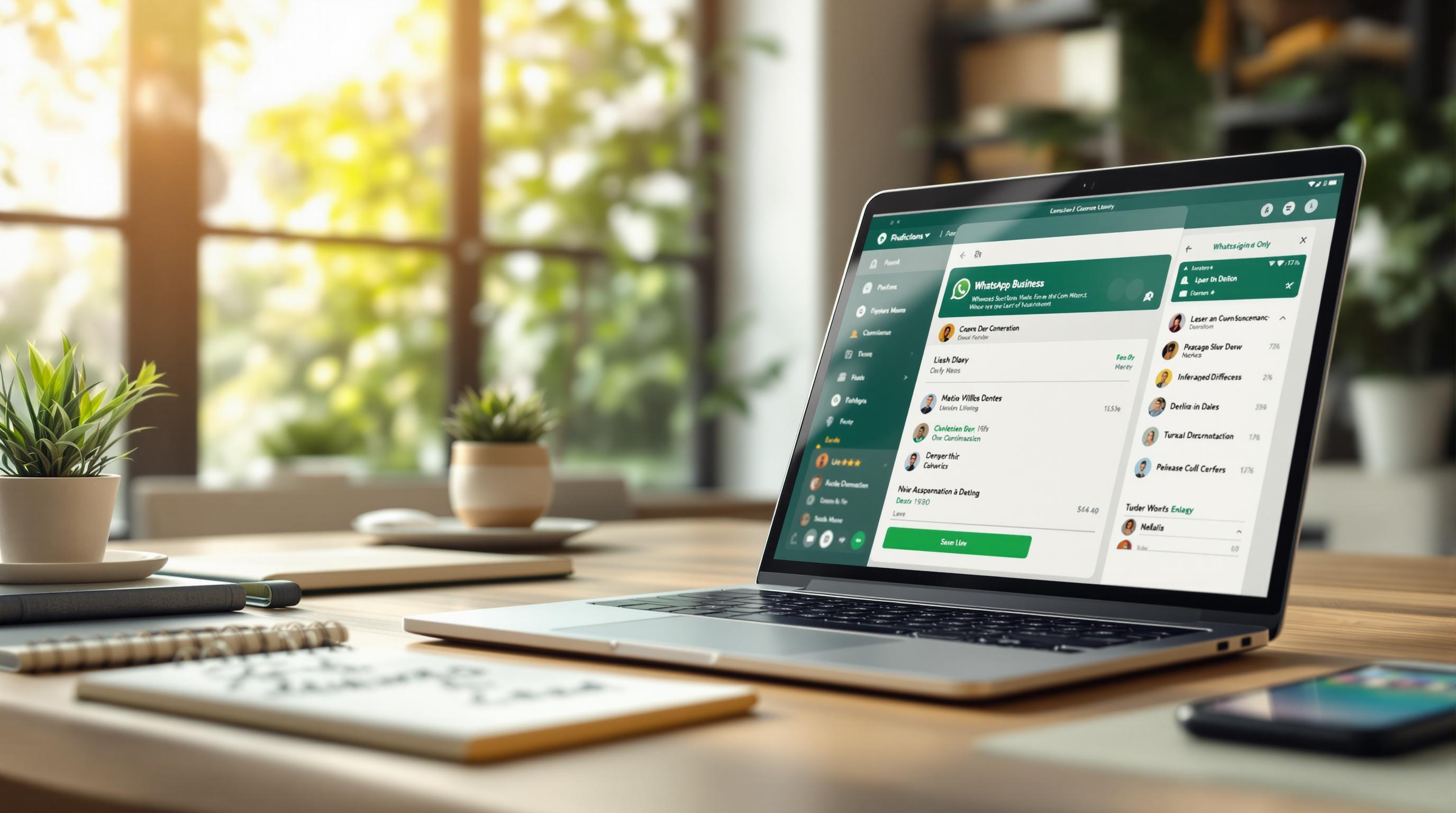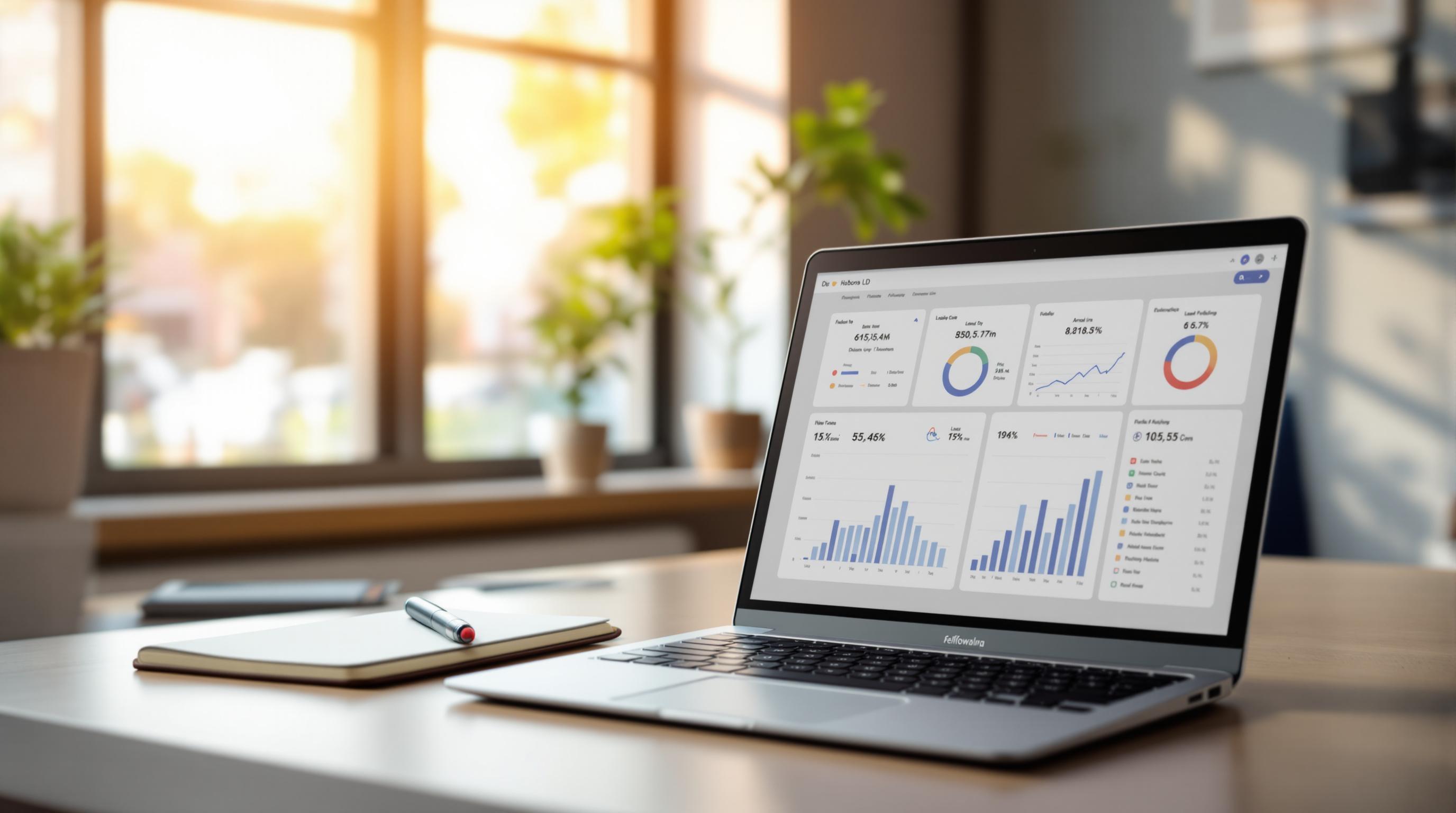Did you know that 23% of service business leads come after hours, yet 24% of companies take over a day to respond? This delay can cost businesses revenue, trust, and opportunities. Here's how to fix it:
- Lost Revenue: Slow responses lead to missed high-value leads (e.g., 22% for solar companies, 35% for legal firms).
- Customer Trust: 72% of customers lose trust in businesses that respond late, and 68% share bad experiences online.
- AI Solutions: Use AI tools like chatbots, real-time engagement, and CRM integration to handle leads instantly, even off-hours.
- Boost Results: Businesses using AI see a 40% boost in lead capture rates and a 28% increase in customer retention.
This guide explains how to set up AI-powered systems, automate follow-ups, and balance AI with human support to turn after-hours leads into opportunities.
Conversational AI Agents Answering After Hours Calls
AI Tools for 24/7 Lead Management
Modern AI tools are transforming how home improvement, solar, and legal firms manage leads. These tools automate critical tasks, ensuring businesses can respond to potential customers quickly and effectively.
Key AI Tool Features
The best AI platforms come equipped with features designed to simplify lead management:
| Feature | What It Does | Benefit |
|---|---|---|
| Multi-Channel Lead Capture | Gathers leads from websites, emails, and social media | Ensures every lead is accounted for |
| Real-Time Chat Engagement | Delivers instant responses to customer questions | Boosts customer satisfaction |
| Predictive Lead Scoring | Highlights high-priority opportunities, such as urgent repairs or consultations | Focuses attention on critical leads |
Integration with existing systems makes these tools even more effective:
| Feature | What It Does | Benefit |
|---|---|---|
| CRM Integration | Automatically syncs lead data | Simplifies workflows |
Top platforms combine automated messaging, seamless CRM syncing, and industry-specific tools like appointment scheduling to maximize efficiency.
AI vs. Manual Lead Management
AI-powered lead management offers clear advantages over traditional methods:
| Aspect | Manual Management | AI-Powered Management |
|---|---|---|
| Lead Qualification | Delayed, often by a day | Instant |
| Data Entry | Manual and prone to mistakes | Automated and precise |
| Lead Routing | Limited to business hours | Available 24/7 |
| Customer Experience | Varies in quality | Consistent and reliable |
For example, AI chatbots enable businesses to engage with customers immediately, leading to better outcomes. In more complex industries, these tools can handle specialized workflows and tailor lead qualification processes to meet specific needs.
Setting Up After-Hours Response Systems
Service businesses can use AI to handle leads even after hours. According to LeadCenter.AI, companies that use automated response systems see a 40% boost in lead capture rates during non-business hours [3].
Chatbot Setup Guide
A well-designed chatbot can handle inquiries efficiently, but it needs proper planning and customization for your industry. Here's how businesses implement chatbot systems effectively:
| Phase | Key Actions | Outcome |
|---|---|---|
| Core Setup | Install platform, set operating hours, define rules | Provides structure for triage |
| Content Design | Develop scripts, emergency protocols, flows | Ensures smooth interactions |
Platforms like LeadCenter.AI and AnswerConnect can detect keywords and route high-priority inquiries to on-call staff automatically [5]. This setup ensures urgent requests are handled promptly, while routine questions follow the automated process.
Email and SMS Follow-up Sequences
Follow-up messages are essential for keeping potential clients engaged until your team can respond. HubSpot reports that personalized follow-up sequences with industry-specific content can increase conversion rates by 35% for service businesses [8].
| Timing | Message Type | Key Content |
|---|---|---|
| Immediate | Confirmation | Acknowledge the service request |
| 2 Hours | Value-Add | Share guides, pricing details, FAQ links |
| 24 Hours | Engagement | Offer scheduling options, service details |
| 48 Hours | Final Touch | Provide alternative contact methods |
Interactive guides, like those from vCita, can cut callback needs by 40% [1]. Their system also adjusts message timing based on how customers engage with previous messages.
For industries like solar installation or legal services, specialized AI platforms offer pre-built response templates that integrate seamlessly with CRM systems. This approach ensures compliance with industry standards while keeping customer engagement high through automated follow-ups.
sbb-itb-4087e62
Connecting AI Tools with Your CRM
Once your chatbot is set up, integrating it with your CRM ensures that leads are routed directly into your sales pipeline. This kind of real-time synchronization can reduce response times for urgent leads by 70-80%, while hybrid approaches cut delays by 50-60% across various service industries.
Data Sync and Task Management
TeleDirect's research shows that companies using real-time syncing for critical lead data - like phone numbers and service areas - see response times improve by 78% [4].
| Integration Type | Ideal Use Case | Impact on Response Time |
|---|---|---|
| Real-time Sync | High-priority leads, contact info | 70-80% faster responses |
| Batch Updates | Interaction history, documentation | 30-40% faster responses |
| Hybrid Approach | Mixed-priority workflows | 50-60% faster responses |
For example, a solar installation company used automated CRM workflows to boost booked appointments by 34%. They achieved this by enabling instant proposal generation and sending SMS alerts [4].
Paperwork Automation Tools
AI-powered document tools, such as Legitt AI, can streamline service proposals by pulling data directly from your CRM. This approach has been shown to improve quote accuracy by 18%, thanks to the analysis of chat history [2].
"The integration between AI chatbots and CRM systems helped our solar installation clients improve quote accuracy by 18% by analyzing both real-time chat interactions and historical project data", says an integration specialist at KolaxoCCS [2].
To protect sensitive data during document processing, ensure you have these safeguards in place:
- Bank-grade encryption to secure data transmission
- Role-based access controls to limit exposure
- Regular SOC 2 compliance audits to maintain trust [9]
Finally, keep an eye on these key metrics for after-hours performance:
- Sync success rate: Aim for over 98%
- Lead-to-opportunity conversion time: Minimize delays
- Duplicate entry rate: Keep it under 2% [6]
This level of automation sets the stage for the next step: seamless collaboration between humans and AI.
Mixing AI and Human Support
Handling after-hours leads effectively requires a smart mix of AI automation and human involvement. Service businesses using these hybrid systems have seen a 28% increase in lead-to-appointment conversion rates by strategically transitioning between AI and human agents [10].
AI Response Monitoring
To ensure automated responses meet high standards, consider these key monitoring practices:
| Monitoring Focus | Performance Standard |
|---|---|
| Response Accuracy | Over 90% relevance (Solar/HVAC) |
| Handoff Speed | Under 2 minutes (Legal) |
| Experience Consistency | Less than 7% tone variance (Home Services) |
Data from Continental Message Service shows HVAC companies achieve less than 7% tone variance between AI and human responses by using voice analysis tools [11]. This consistency builds customer trust during transitions.
"The integration of AI monitoring dashboards helped our solar installation clients identify and correct response inaccuracies within hours instead of weeks, leading to a 40% cost reduction while maintaining 89% customer satisfaction rates", says LeadDriver AI's implementation specialist [10].
These practices allow businesses to fine-tune their systems for specific industries.
Industry-Specific AI Setup
Different service industries require tailored AI configurations to handle after-hours leads effectively. For instance, legal firms using LeadCenter.AI route conversations mentioning terms like "malpractice concern" directly to attorneys, keeping escalation rates for complex cases between 15-25% [13].
Here’s how AI configurations vary by sector:
| Service Sector | AI Configuration | Critical Handoff Triggers |
|---|---|---|
| Home Improvement | Material calculators, project estimators | Contract reviews, custom quotes |
| Legal Services | Confidentiality protocols, case screening | Disclosure of sensitive case details |
| Solar Installation | Tax credit updates, financing calculators | Custom system designs |
Cox Automotive's lead management system highlights the financial benefits, with plumbing services seeing a $12 return for every dollar spent by minimizing missed after-hours calls [10]. This success relies on detecting trigger phrases and using sentiment analysis to flag frustration before it affects customer satisfaction.
To keep performance sharp, service businesses should also conduct weekly role-play sessions to ensure consistent messaging across all touchpoints [12].
Conclusion: Steps for Better After-Hours Lead Management
To boost lead conversion and keep customers happy after hours, service businesses can follow a practical mix of AI tools and human involvement. By integrating AI monitoring and CRM systems, companies can build a solid foundation for after-hours engagement.
Focus on instant responses by using automated triage systems. Here's a simple breakdown of how to structure your approach:
| Phase | Key Focus Areas |
|---|---|
| Initial Setup | AI chatbots + CRM integration |
| Optimization | Lead scoring + Automated routing |
| Full Integration | Hybrid support + Analytics |
Keep your system sharp by updating it regularly. For example, training chatbots monthly with real conversation logs can ensure they stay accurate and effective [7]. This kind of regular maintenance is crucial for delivering high-quality service across industries.
To strike the right balance between automation and human input, track these important metrics:
- First-response time to ensure quick engagement
- Lead qualification accuracy for better targeting
- Conversion rates to measure success
- Customer satisfaction scores to gauge service quality
By keeping an eye on performance, businesses can pinpoint areas for improvement while maintaining consistent service. This balanced approach connects the speed and efficiency of automation with the personal touch customers value.
When done right, this strategy helps businesses handle after-hours leads smoothly, turning them into opportunities without sacrificing service quality. The key? Regular monitoring, ongoing tweaks, and blending automation with human expertise.
FAQs
How to use AI to generate leads?
AI tools are particularly helpful for managing leads after hours, thanks to their ability to automate tasks like capturing and qualifying prospects. Here's how businesses effectively use AI for lead generation:
- Data Integration and Analysis: AI tools gather and organize leads from multiple channels, providing a complete view of customer interactions. Businesses with integrated tracking report a 42% improvement in lead qualification accuracy [3].
- Automated Responses: Features like 24/7 response capabilities and smart routing significantly improve performance. For instance, automated replies are 68% faster, and smart routing leads to a 23% increase in conversions [3][5].
- Tailored Solutions for Industries: In the solar industry, AI analyzes utility bills and energy usage patterns, leading to a 30% rise in qualified leads [2].


